Ruark R410 Review
A gorgeously-styled all-in-one system from Ruark Audio

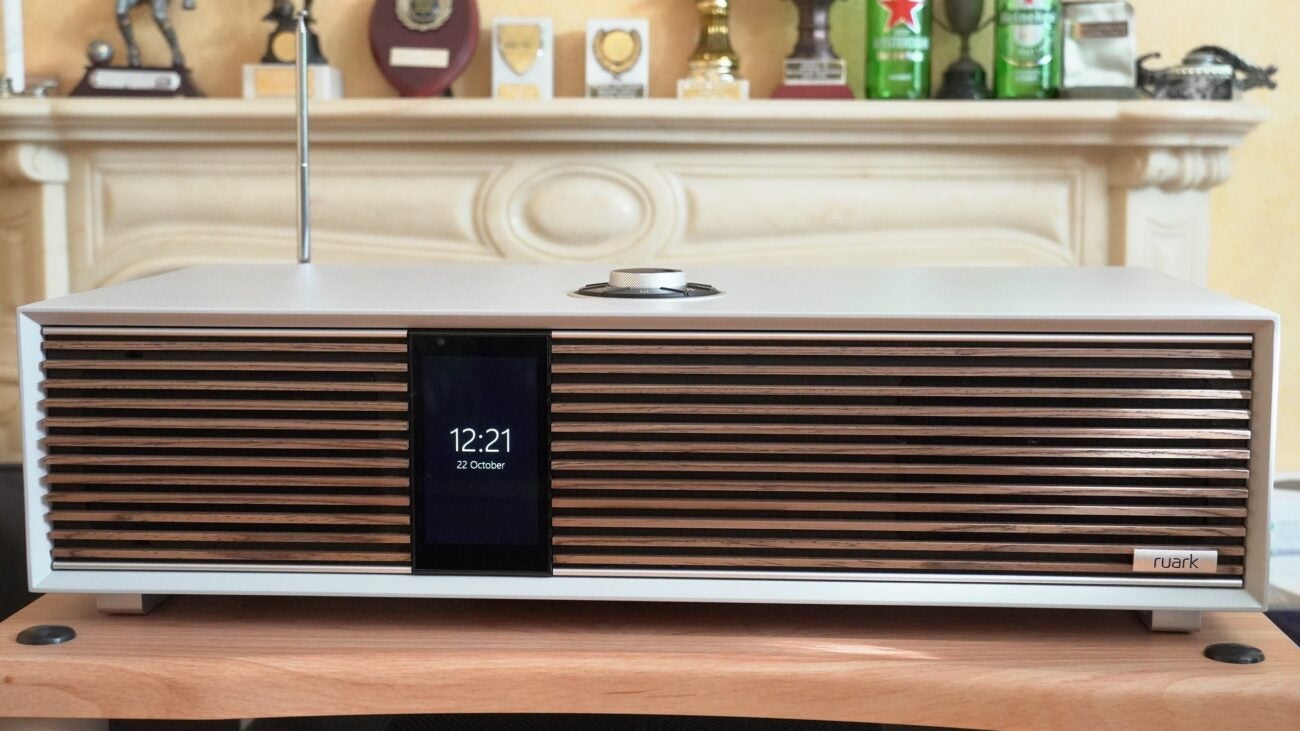
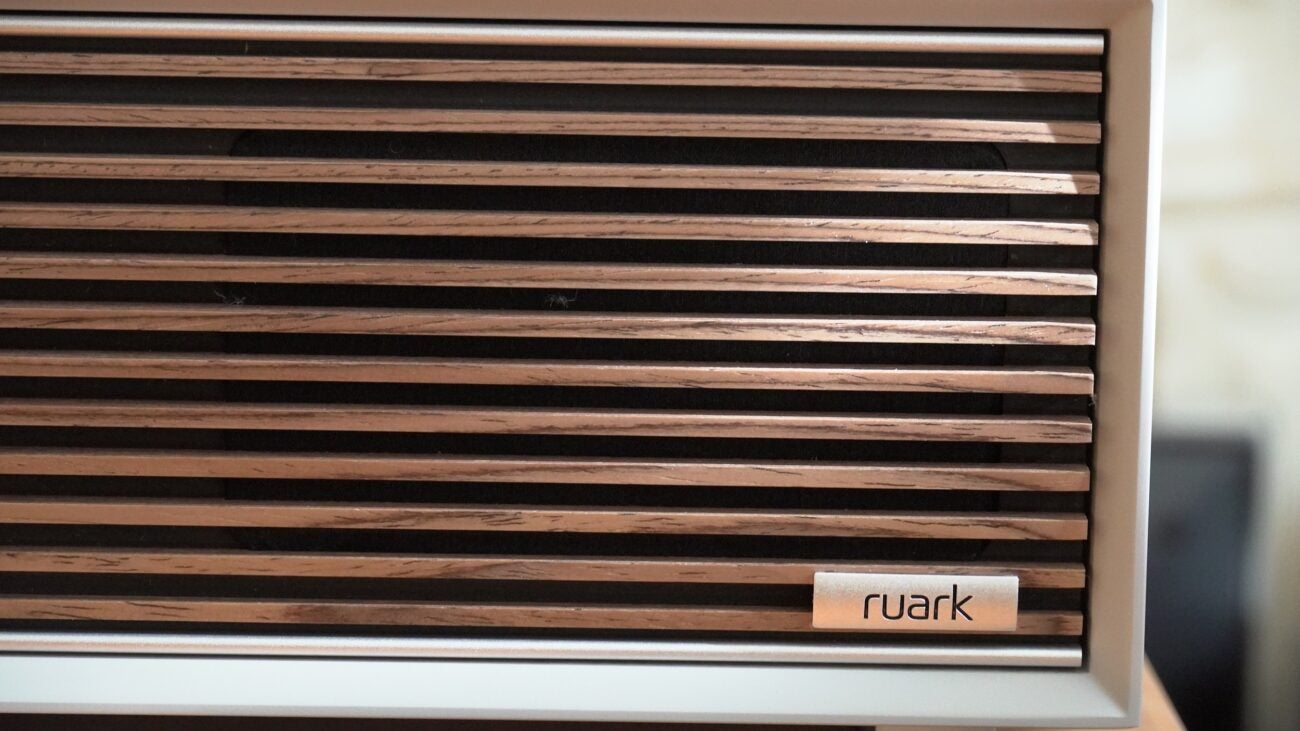

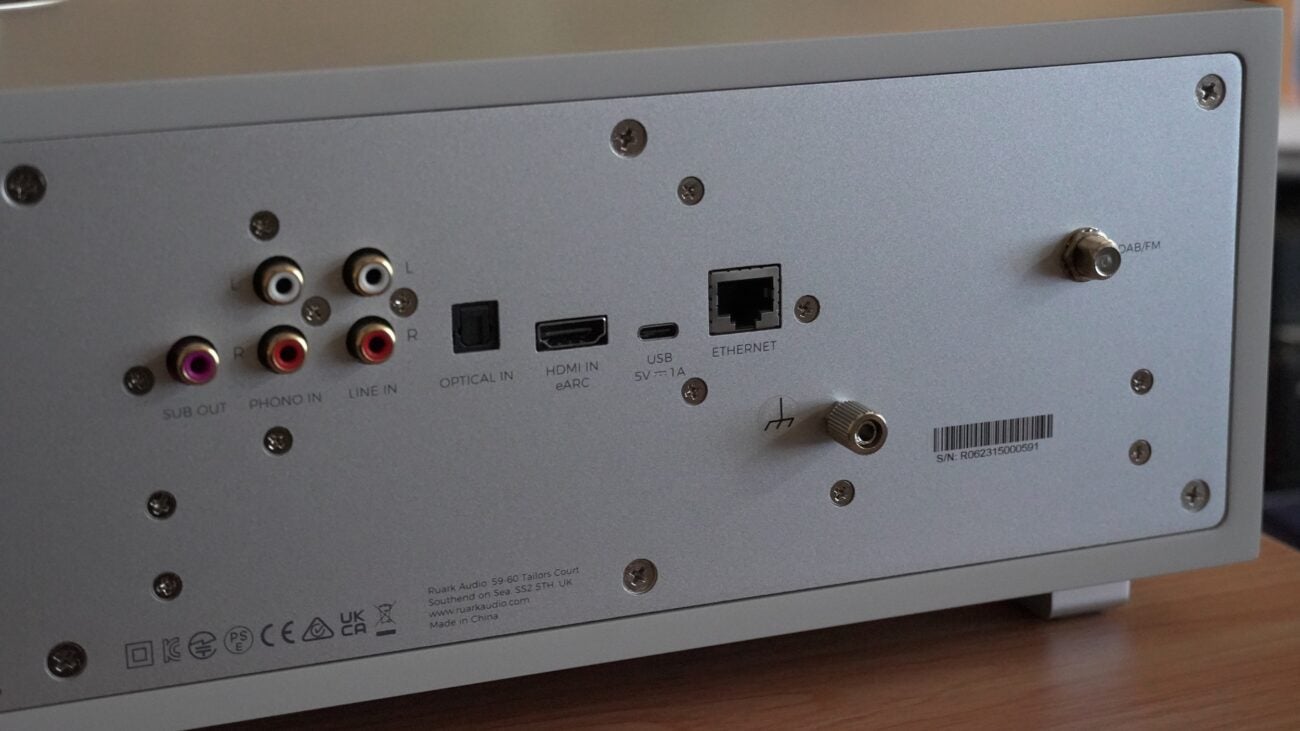

Verdict
The Ruark R410 is a confident-sounding, thoroughly engaging, and accessible all-in-one music system graced with looks that’ll make anyone stand and stare.
Pros
- Tremendous looks
- Wide range of wired and wireless connections
- Easy to use
- Confident and engaging audio
Cons
- On the pricey side
- TV performance is merely fine
- Sharp but slightly thin midrange
Key Features
- HDMI eARC/ARCCan connect to a TV for two-channel sound
- Wi-FiStream over AirPlay 2, Spotify Connect, Tidal Connect, and Chromecast
- RotoDialOperate via integrated or wireless RotoDial control
Introduction
All-in-one systems have become popular, as hi-fi brands look to offer a one-box solution that’s accessible and appeals to a market that shies away from traditional hi-fi. An example of this is the Ruark R410.
It’s an all-in-one system with streaming at its core, but it’s versatile too, able to be used as a TV speaker or connected to a turntable or CD player (though USB).
Its appeal is wide-ranging, especially for those who want minimum fuss and given Ruark’s history for excellent-sounding products, this has the hallmarks of a music system that could stay in your home for years.
Design
- Fabulous looks
- Portrait display
- Heavy, tough build quality
Does it need to be stated that the Ruark R410 looks fantastic in the flesh? If that isn’t the case, then let me confirm it – this is a high-quality all-in-one system that feels premium from top to bottom.
It is well built – the exterior is hard (give it a knock), robust, and smoothly finished. The wood panelling (made from sustainable wood) lends the R410 a natural look. The design removes that austere look that hi-fi can have for something more pleasant and accommodating.
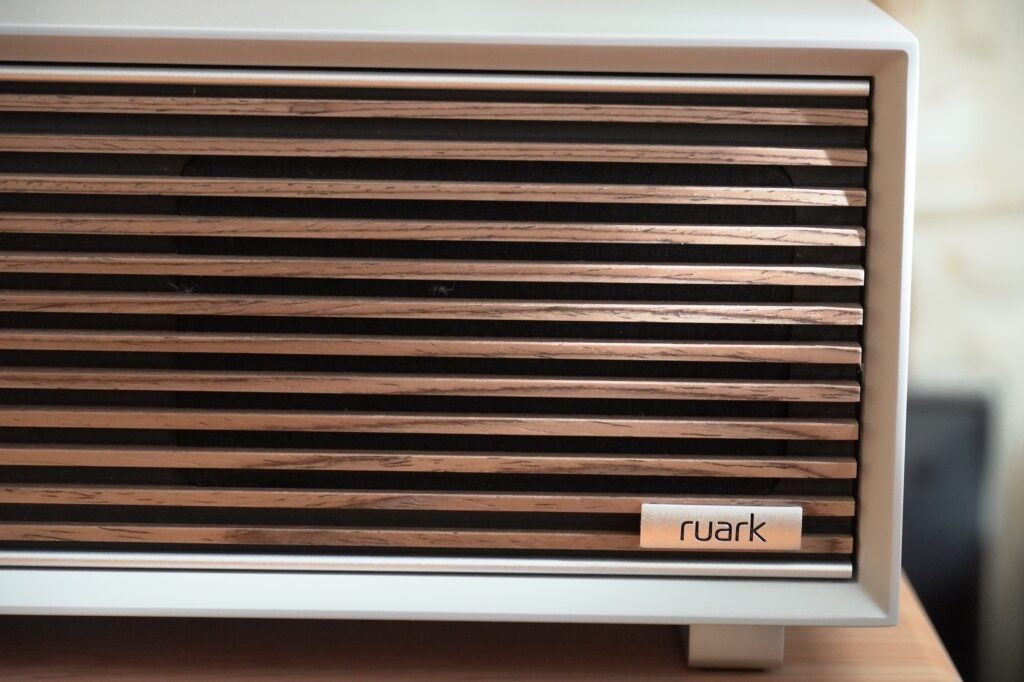
It’s not as unique-looking as the Sonus faber Omnia, but will stand out in any room it’s placed in. Ruark’s motto is that the R410 is designed to be seen and I can’t say that I disagree.
It is a heavy unit at 9.5kg, and at 560mm wide and 325mm deep, the Ruark R410 requires space and a firm surface to plant it on.
I like the portrait orientation of the display – Ruark says it’s intended to mirror a smartphone, and it is also just a different choice that marks the Ruark out as different from the herd. Four inches in size and in full colour, the screen stands out from whatever angle it’s viewed from – artwork looks as good on the display as it does on your mobile device. It can be a little hard to read text from a distance, though.
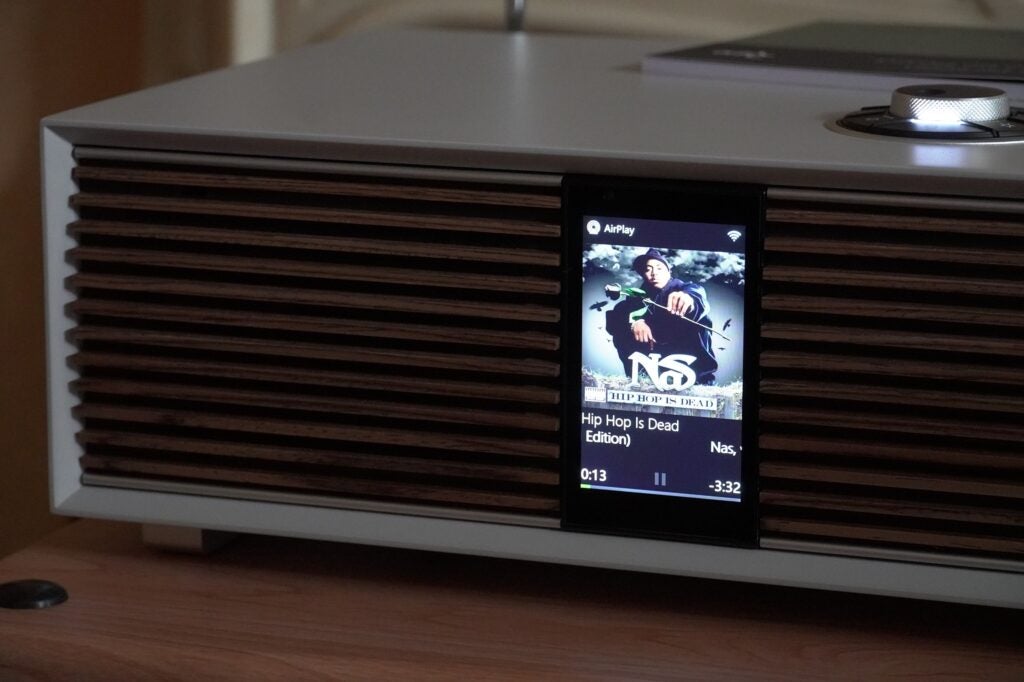
It comes packaged with two RotoDial controllers: one integrated into the R410’s top surface, the other is a matching remote you can use from the comfort of your listening position. The question of whether two are necessary is a relevant one, especially as you’ll be queuing tracks from your mobile device as well.
But I think it’s worth having two given the RotoDial offers access to controls and settings that you wouldn’t be able to reach on a smartphone unless there’s access to an equivalent app. The RotoDial is small and easy to hold in the hand, rechargeable through a USB-C port, and connects to the main unit via Bluetooth.
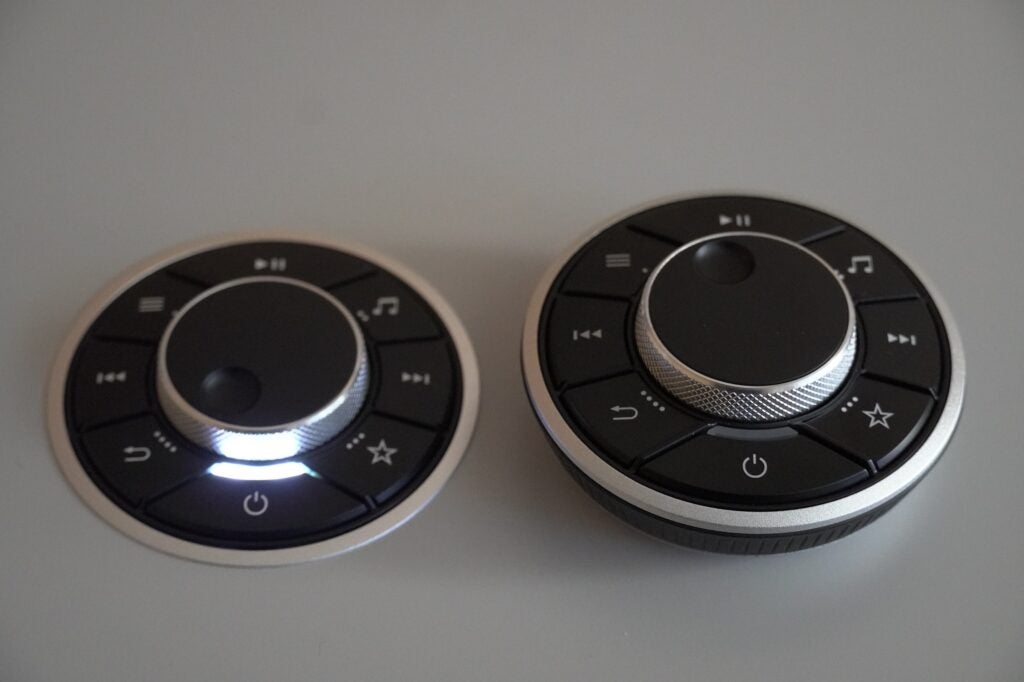
Pairing is simple and quick – it takes less than a minute – and the latency is good, though getting used to how it works took me a little while. I’m so used to seeing the ‘return’ button as the one to press when going backwards through the menus, and that is the case here. But if you want to return to the screen where artwork is displayed, you must press the menu button again.
The Ruark R410 is available in two finishes. My review sample is soft grey lacquer with walnut grille, and the fused walnut veneer cabinet and grille finish looks even better.
Features
- Can be connected to a TV
- Wealth of streaming options
- 20 presets
Physical connections include stereo RCA line input, subwoofer output (mono RCA), optical audio input, phono input (Moving Magnet RIAA), HDMI ARC/eARC, Ethernet, and a USB input.
And of course, there’s an aerial/tuner for those who want to listen to FM, DAB, and DAB+. Internet Radio is also there for those who want easy access to stations from around the world.
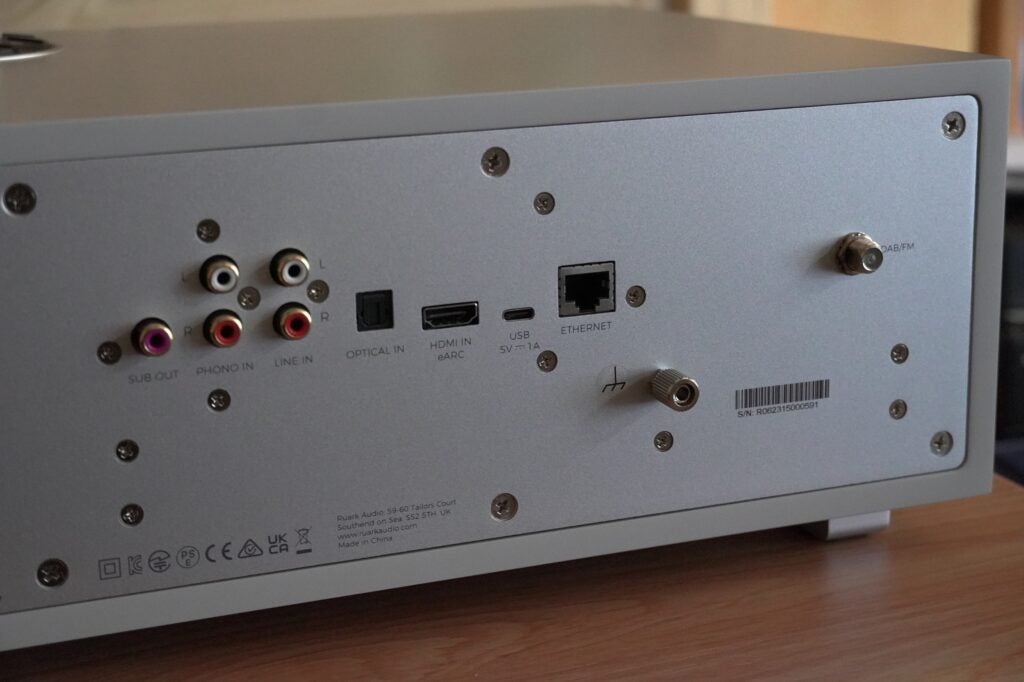
The USB input can facilitate CD playback via a USB connection, the HDMI input allows for connection to any HDMI-toting TV, while the phono input allows for a turntable to be slung alongside this system.
Prefer playing music from your mobile device? The R410 offers plenty of ways to get connected. Spotify Connect and Tidal Connect are both built in, so you can stream directly from those services with your mobile device acting as the remote.
Apple AirPlay and Chromecast are built in as well, and the benefit of having these two streaming protocols is that the R410 can sit within a multi-room setup if you have other devices in the home that are compatible. There are no Alexa and Google voice smarts.

Streaming services such as Amazon Music, BBC Sounds, Qobuz, and Deezer can be cast to the Ruark. DLNA is also possible if streaming from devices on the same network. Bluetooth 5.1 offers another means of flinging tracks, with SBC, AAC, and aptX HD streaming supported.
If you’re not using the USB port to connect a CD drive, it can be used for file playback; and the Ruark can playback AAC (320kbps/96kHz), WMA up to 48kHz/320kbps), WMA 9 up to 48kHz/256kbps and final FLAC, ALAC (Apple Lossless), and WAV up to 32-bit/384kHz.
You are presented with 20 presets, and after an issue where for whatever reason they weren’t working, I finally managed to set some. The total number is global and not specific to each mode, and I found you can’t hop from one type of connection to another. If you’ve set a preset for AirPlay, you need to be on an AirPlay connection to recall it. I imagine there will be some who’ll feel they can gallivant from one connection mode to another.
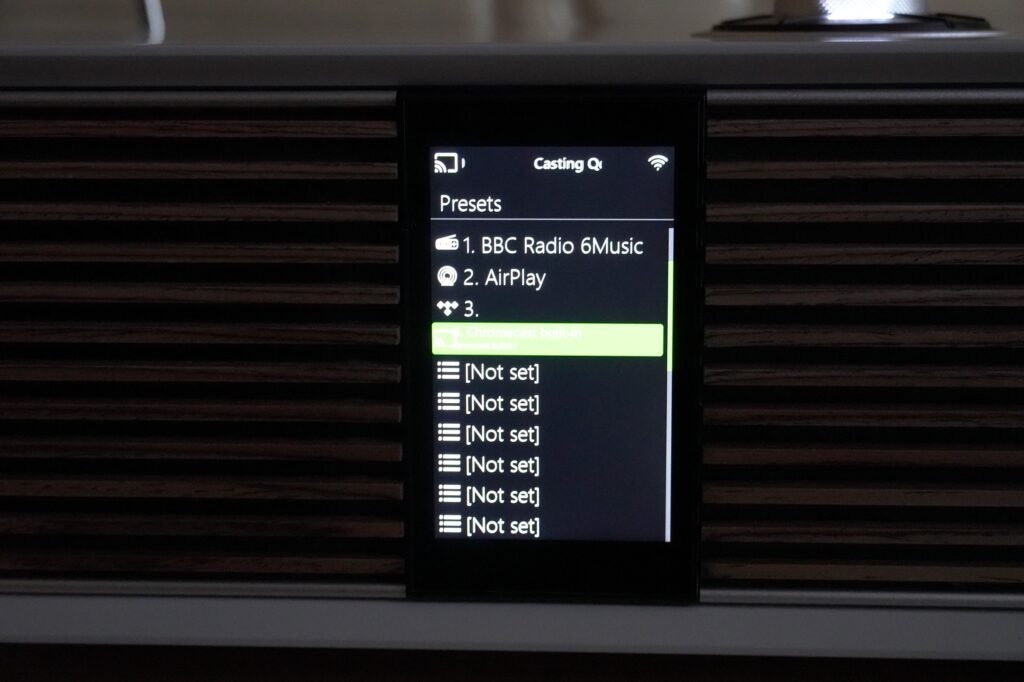
There’s no auto EQ option in terms of room equalisation, but there are a couple of EQ options with bass and treble adjustments, an adaptive EQ that responds to volume levels, and a Stereo+ 3D option which is a fancy term to make the stereo effect more pronounced.
Sound Quality
- Rich, assertive bass
- Crisp, sharp treble
- Clear, crisp, and slightly lean midrange
The audio part of this review commences with a listen to BBC Radio 5Live and Jazz FM Stereo. Listening via DAB produced a spacious performance that exuded a natural sense of warmth to the sound. With Jazz FM it’s rich but clear with the midrange and upper frequencies, with a nicely balanced sense of bass, twined with a fine sense of detail and clarity.
It does feel full bodied in moments, but not over the top. Presenters’ voices are described with weight, but due to the way that it’s tuned, there’s more of a richness to commentary than an overtly bassy tone. There’s heft and power granted to the low frequencies, reinforced by two bass reflex ports that communicate some of the 120W of power at this speaker’s disposal.

I kept the Ruark R410 below volume 12 for most of the testing, as I found at this level it does get a bit shouty – perhaps even slightly shrill with high frequencies. At higher volumes the system trades detail for energy; vocals can lose their presence within the soundstage, which itself can come across as if it’s bursting at the seams with more complex tracks. There’s a lot of relish about how the Ruark attacks songs and it can be a tad overzealous in its manner.
Even at volume 10, its sound is an impactful one – it can easily fill a room with its presence, although there’s not the sense that R410 projects outwards from its exterior, especially with voices which could do with being more detached and projected from instrumentation around them – more that the Ruark sounds ‘big’. I find myself leaning into the speaker rather than sitting back.
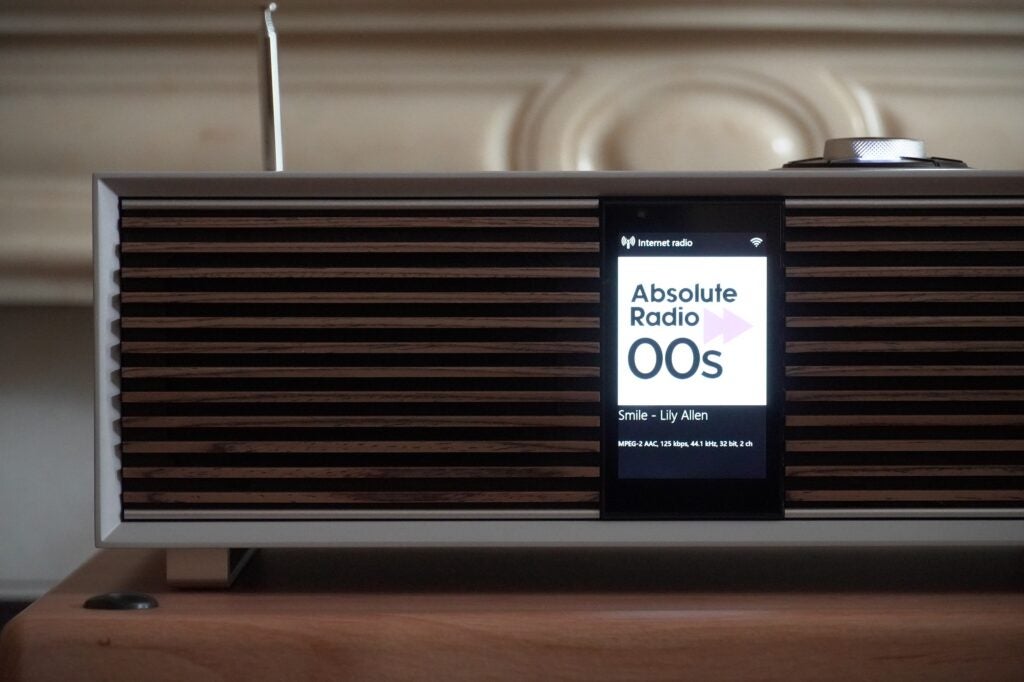
Moving on to streaming services (Chromecast/AirPlay/Tidal Connect) and I note the Ruark’s tendency of meshing its richness with a crisp and sharp midrange performance, though vocals can sound a little thin in a play of Harry Styles’ As It Was, trending towards sibilance at times.
It’s a dynamic performer, but not necessarily in an energetic or frenetic manner, with the rise and falls in tracks conducted in a measured, sweeping way. There’s a sharp but natural tone to the treble in GoGo Penguin’s Raven, the bass conveyed with rapidity and forward momentum that conveys the track’s energy. Both at the top and bottom of the frequency range, the Ruark unearths an excellent sense of clarity.

It’s an expressive-sounding system, a versatile one that can handle a range of tracks whether they’re slow paced ones like The Fugees’ Ready or Not or something more energising like House of Pain’s Jump Around. Stereo imaging is in full force, with a definite sense of left and right channel.
Switch to Bluetooth and the Ruark does not sound as sharp or as clear as on Wi-Fi, but some may prefer the smoother approach. Bass isn’t as extended, and it does lose a little in terms of subtlety and dynamism, but it remains a detailed listen.
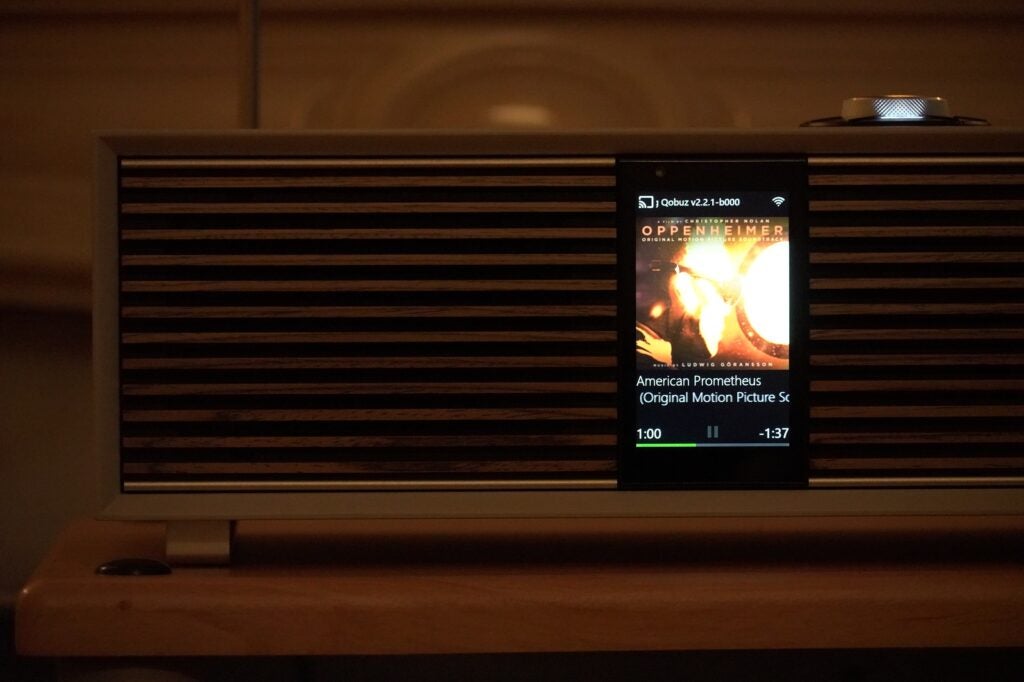
Would I – or more pertinently, should you – consider this as a soundbar replacement? It’ll work best if your TV is wall-mounted, as fitting the Ruark into an enclosure robs it of its presence, but my answer would lean towards “maybe”.
Voices are conveyed crisply and cleanly, but when watching Only Murders in the Building the Ruark R410 sounded reined in and slightly reserved. The dynamic range doesn’t feel as pronounced watching Avengers: Endgame – while there’s power, the action in the film feels a little less impactful, the bass flat in places.
There’s decent scale to what the Ruark can summon, and it doesn’t always feel as if audio is coming from the speaker, though I’ve found at times that while dialogue is rooted to the screen, the score in Only Murders actually sounded like it was coming from the speaker below the TV. There was also some popping and cracking fast-forwarding through programmes or loading new episodes.
Latest deals
Should you buy it?
A convenient all-in-one system
Afraid of traditional hi-fi? The Ruark’s mission is to make it easy to stream music whilst producing a room-filling sound.
You want to use it with a TV
The Ruark’s size and heft means it’s better partnered with a wall-mounted TV, and its two-channel performance isn’t always the most convincing.
Final Thoughts
The Ruark R410 is a confident, engaging, and thoroughly entertaining all-in-one system as far as its music performance is concerned. Add to that its frankly stunning looks, and this is a system that will take pride of place in any room in your home.
It’s accessible to use with its streaming focus and offers an array of funnelling music to, and getting music out from, the speaker. It does put a premium on what is effectively a stereo speaker, and though it offers plenty of convenience with its versatility, like the Sonus faber Omnia, it’s not a system I’d say you’d get the most out of by connecting it to a TV.
Some may feel it’s too bass heavy, while I’d say that the midrange can be a little too crisp and lean, but I found the directness, the energy, and the full-bodied nature of the Ruark to trump it. The R410 looks sensational, sounds very good, and impresses with its wealth of connectivity options. It won’t be for everyone, but for those who enjoy music, they’ll find a like-minded system in the Ruark R410 to appreciate their favourite tracks and albums.
How we test
We test every system we review thoroughly over an extended period of time. We use industry-standard tests to compare features properly. We’ll always tell you what we find. We never, ever, accept money to review a product.
Find out more about how we test in our ethics policy.
Tested for several weeks
Tested with real world use
FAQs
With its range of physical inputs/outputs, you can plug a subwoofer, turntable, CD player, or a TV into the Ruark R410.








